Around this time last year, I was in transit from the warmth of a dream thesis to the sheer cold of a Sudbury winter. I was in shock: it was the end of my Masters in Scotland—a surreal year of researching the geology of curling stones—and I was faced with the reality of moving on to a PhD. Over the past year, I’ve come to learn that every relationship is different, and my relationship with research is no stranger to the rule. But seeing as this bout of nostalgia brings the warmth of sweet nectar to my chest, let me take you on a pilgrimage of granitic proportions. The hero’s journey begins with a collision of two passions, followed by a serendipitous pilgrimage, which detours through arts and culture—then falls into an apocalyptic abyss—before finally returning to new beginnings.
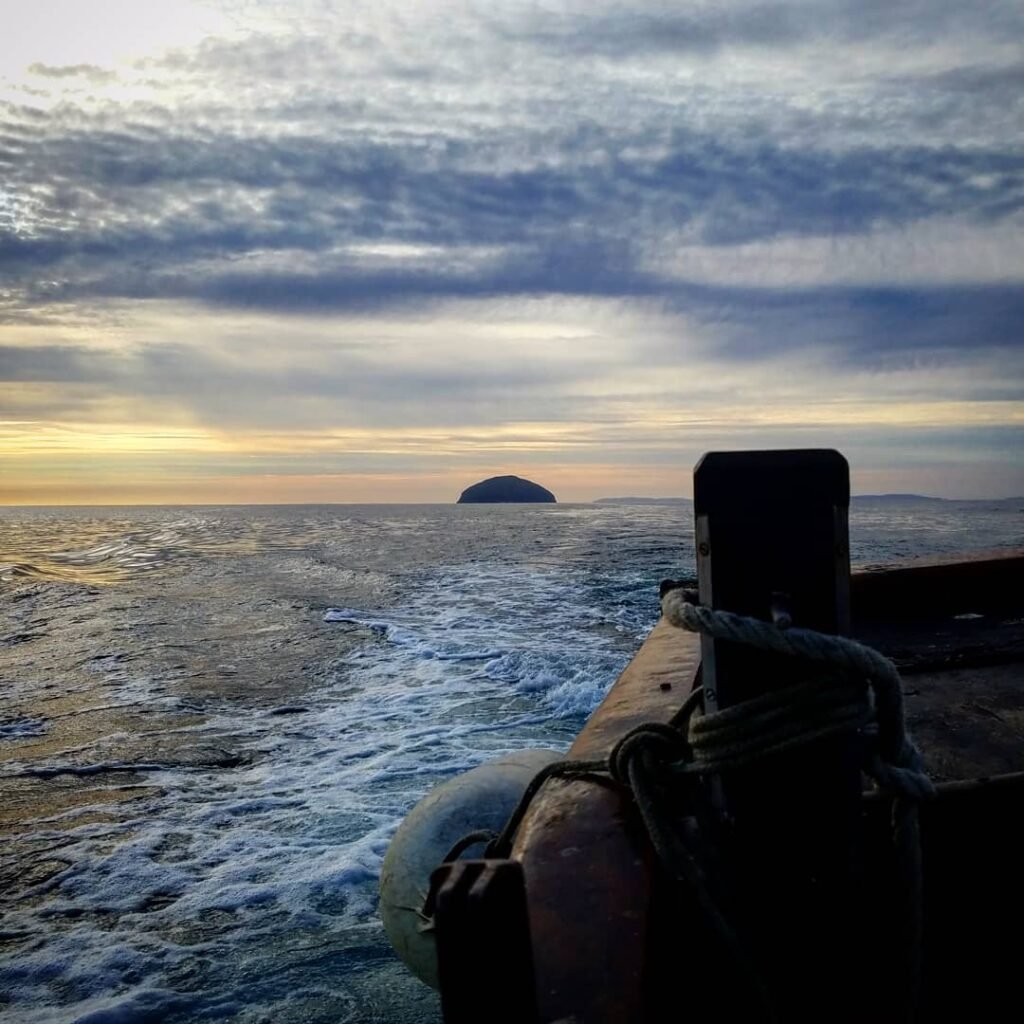
A Collision of Two Passions
Geology and curling: what do they have in common? Rocks and Scotland. Geology is the study of rocks, while curling is an Olympic winter sport involving rocks on ice. Both originated in Scotland.
As a mineralogist and international-level competitive curler, I’ve always wondered what curling stones are made of, and what—if anything—makes these rocks so special. Approaching the fourth year of my undergrad at Laurentian University (Sudbury), I scrambled to choose a topic for my thesis. My supervisor (Prof. Andy McDonald) and I joked about a research project on curling stones. I was worried that researching curling stones would be a dead end because it had no real-world applications. Andy responded along the lines of, “Why not? It combines your passions, challenges common knowledge, and is something to which the general mass can relate, so it is incredibly valuable.” So began my journey researching the geology of curling stones.

Taking Rocks for Granite
Famously, the rocks used to make curling stones (for international competition) come from only two places in the world: Ailsa Craig, Scotland and Trefor, North Wales. So, what makes them special? As the first mineralogical study comparing curling stones since 1890, the goal of my undergraduate thesis was to establish a baseline study of the mineralogical and textural properties of curling stones. I was fortunate to receive an SEGCF Undergraduate Scholarship to support this research, in addition to many scholarships that have supported my undergraduate studies, such as the APGO Education Foundation Scholarship.
In short, I found that curling stones are young (Phanerozoic), fine- to medium-grained, sparsely porphyritic to glomeroporphyritic, weakly to moderately altered, massive to weakly foliated granitoids. Interestingly, different rocks are used for the bottom profiles (running bands) versus side profiles (striking bands), and the textural differences between these rocks likely corresponds to the different functions of each component (sliding versus impact, respectively). Finally, the presence of strain-free quartz challenges the historical assumption that quartz is undesirable in curling stones. However, none of these characteristics are particularly unique to curling stones.
To learn more about my undergraduate thesis research on curling stones, check out my short articles in The Edinburgh Geologist (copied below), and Rockwatch Magazine, or check out the peer reviewed paper here!
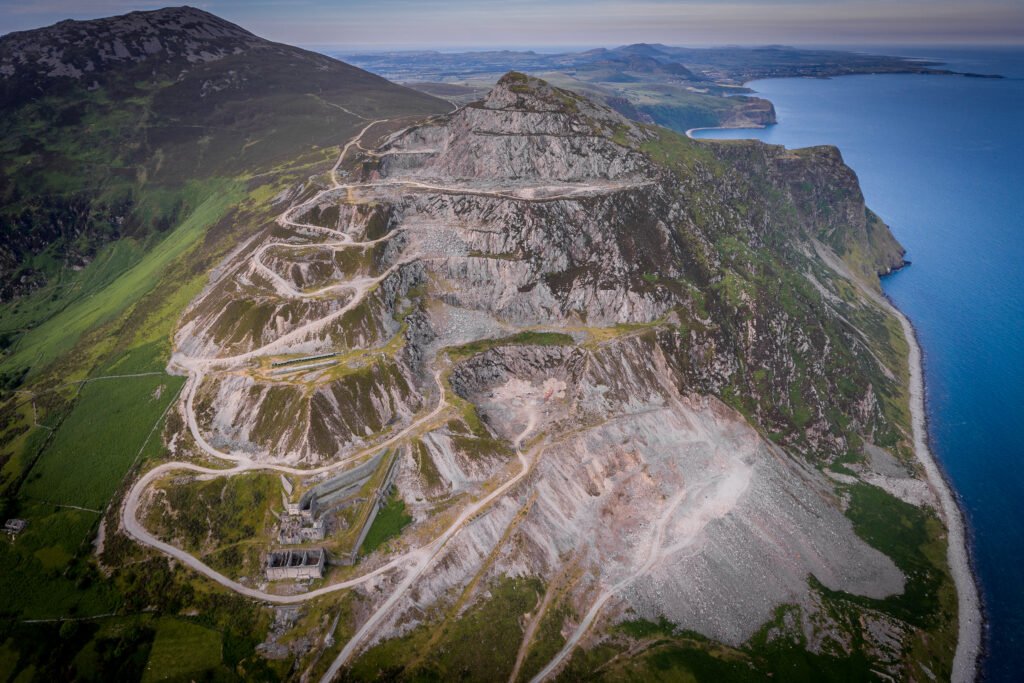
Serendipity
At the end of my final undergraduate year, I was at a crossroads. I had planned out my entire life—from kindergarten until this point—and I found myself staring into the abyss of an unknown future. Do a masters or work in industry? I searched and searched for an answer, but every burst of passion dwindled to apathy. Nothing caught my interest.
Andy suggested a project involving the synchrotron, a particle accelerator that produces bright X-rays, which can be used to investigate rocks and minerals. I found a paper about applying synchrotron methods to geology. The first author of the paper, Dr. Florian Fusseis, was based in Edinburgh. I emailed Florian and discovered that he was involved in a project using Ailsa Craig rocks and synchrotron radiation to understand how fractures form in real time. He was looking for a student to work on curling stones! Serendipitously, I was about to embark on a university trip to Ireland, and a detour to Scotland was already in my itinerary. I had the opportunity to meet my second supervisor, Dr. Ian Butler, in person. Six months later, I was back in Edinburgh to begin my Masters by Research (MScR).
Faith
The project in Edinburgh was a poetic dream, but it was time for a reality check. In March of 2019, I had an opportunity to do a funded MSc at Laurentian, researching the trace-element chemistry of gold. Staying at Laurentian was safe: I knew the supervisors, the project was fully funded, and the research findings would be fruitful (everyone loves gold, right?). My project at Edinburgh, on the other hand, was a completely different story: I’d have to move across an ocean to work with supervisors whom I barely knew, there was no funding tied to my project, and I had no idea what I would find. The funding situation was a harsh reality: being a self-funded international student meant spending $45,000 CAD for a year of tuition, without considering food, living, and travel expenses. Was it worth the risk?
There was only one way to find out: to take a leap of faith.
I took ownership of my project in Edinburgh and applied to as many funding sources as I could find. I was fortunate to receive several scholarships to support my studies in Scotland, including the Saltire Scotland Scholarship (funded by the Scottish Government—more on this later), the Mineralogical Association of Canada Foundation Scholarship, the Yamana Gold Student in Mining Scholarship (awarded by the Young Mining Professionals), and the Jennifer and Blair Campbell Bursary from the Gem and Mineral Club of Scarborough. I was also responsible for my research expenses, and I was fortunate to secure funding from the Edinburgh Geological Society and the Moray Endowment Fund. I am sincerely grateful to these organizations, as well as my family and friends, for having faith in me.
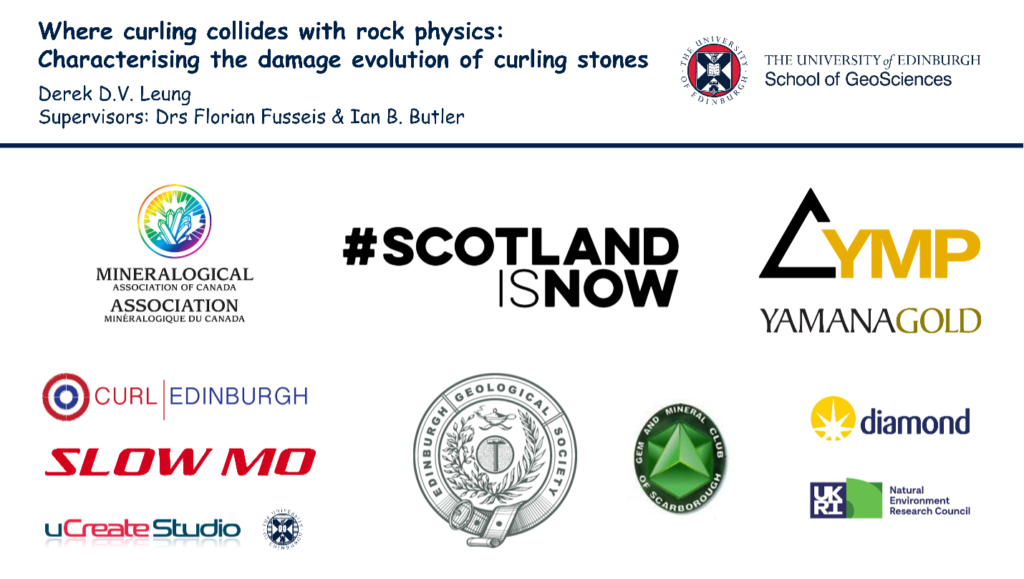
Where Curling Collides with Rock Physics
Aligning with the research themes of earthquakes and fracture mechanics, my research project focused on how the striking bands (side profiles) of curling stones accumulate damage over their lifetimes. Over the course of a game, curling stones collide into and displace other stones, which produces damage in their striking bands. In particular, the damage manifests as flattened striking bands and the development of crescent-shaped fractures. I described this damage using 3D scanning, photogrammetry, petrography, and scanning electron microscopy. To contextualize the damage in terms of stress regime, I designed a series of on-ice experiments at Curl Edinburgh, involving a high-speed camera and pressure-sensitive films. I also had the opportunity to design and help run synchrotron-based X-ray micro computed tomography experiments at Diamond Light Source.
I found that crescent-shaped fractures belong to a class of fractures known as Hertzian cone fractures, which form by point loading. Point loading occurs when two objects (such as spheres) are pressed together, and the contact area approximates a point. The regions immediately under the contact points of the objects are compressed, while the surrounding regions experience no compression. Thus, tension is produced at the interface between these two regions, and this conical interface is where the objects fracture. Some examples of Hertzian cone fractures include cone fractures in windshields and glacial chatter marks.
Through my experiments, I explained that fractures form in curling stones because the stress of the impacts (minimum estimate of >300–680 MPa) exceeds the compressive strength of the rocks (300–520 MPa). An unexpected discovery from my research was that rock powder is released from the striking bands after every impact, which explains why the striking bands of curling stones flatten over time.
Watch the video below to see the high-speed camera footage and learn more about my project.
The Pilgrimages: Geology
Although a lot of my time in Edinburgh was spent smashing things together, curling stones were not the only Scottish rocks that grabbed my interest!
Siccar Point is the ‘Mecca of geology’ because it formed the basis for James Hutton’s theory of uniformitarianism, that processes in the past were analogous to processes occurring today. I visited Siccar Point during my first trip to Scotland, and I was fortunate to return as a field demonstrator for the first year undergraduate Earth Dynamics class. It was particularly fulfilling to guide the students through the hand lens of James Hutton, from describing the rocks and illustrating their contact relationships, to interpreting the geologic history recorded by the rocks: two cycles of sedimentation, tilting, exhumation, and erosion, forming an angular unconformity. Indeed, the cyclicity revealed at Siccar Point forms the basis for the theory of uniformitarianism!
With an extinct volcano in its backyard, Edinburgh is a geologist’s treasure. A 5 km run around Arthur’s Seat and Holyrood Park traverses the insides of a volcanic complex, featuring volcaniclastic-filled vents (Lions Haunch), massive flows (Long Row), columnar basalts (Samson’s Ribs), tuff strata (near St. Anthony’s Chapel), and a sill complex (Salisbury Crags). Hutton’s Section shows the striking overlap between neptunism and plutonism, as fingers of a hot sill (Salisbury Crags) bridge through and bake sedimentary rock layers.
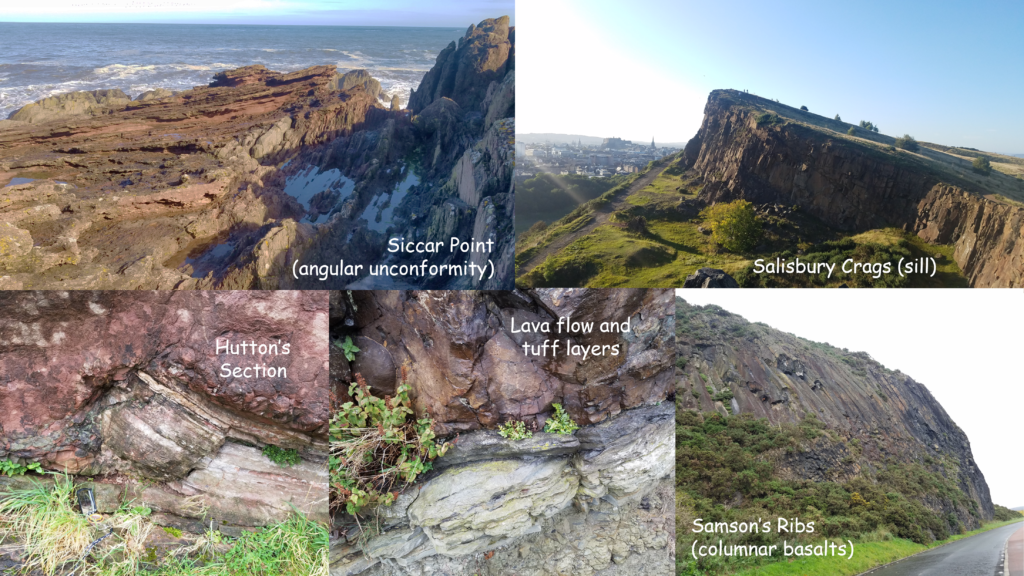
The Pilgrimages: Curling Stones
Being a stone’s throw away from the only two sources for curling stones, the pilgrimages to Trefor and Ailsa Craig were inevitable. Within a month of arriving to the UK, I took the train down to Bangor, North Wales, and then drove to Trefor. I saw firsthand how curling stones are made, from boulder to slab to cheese, and then roughly shaped before being sent to Canada for CNC grinding. I also hiked through the quarry to find contact relationships between the rocks. Then, I visited the village with the second-longest place name in the world, Llanfairpwllgwyngyllgogerychwyrndrobwllllantysiliogogogoch (spoiler: it’s a tourist gimmick dating from Victorian times).
Visiting Ailsa Craig turned out to be much harder. Ailsa Craig is an uninhabited island in the Firth of Clyde, on the west coast of Scotland. The boat hire to Ailsa Craig costs about £360. Fortunately, my fieldwork costs were covered by the Edinburgh Geological Society’s Mykura Fund. Even then, perfect conditions were required to land safely on Ailsa Craig, including impeccable weather, low wind speeds, favourable wind directions, and high tide. I was finally given the go-ahead on the third scheduled date, and it was worth the wait. I spent six gorgeous hours on Ailsa Craig with enough time to visit the south, north, and peak areas of the island.

Artist by Nature, Scientist by Nurture
Edinburgh is hailed as the “Athens of the North” because of its rich cultural history and architecture. There were always places to explore: the Royal Mile, Calton Hill, and the Water of Leith, to name a few. It was a great place to explore art as well, through photography, writing, and pen drawing. I even wrote two songs and filmed a music video (warning: contains coarse language).
Within the University of Edinburgh, the UCreate Studio makerspace was a particular treat. Filled with 3D scanners and printers, a CNC mill, a laser cutter, electronics components, and more, it was a giant sandbox where I could make my ideas become reality. Some of the projects that I worked on included a 3D-printed print-in-place chainmail necktie, a mask of my friend’s face (for a Christmas present to another friend?!), and 3D printed mineral structures. In a rare moment, I knew that I belonged here. I fell in love with myself, surrounded by lifelong friends and memories, immersed in the culture of a nation that I’ll never forget.
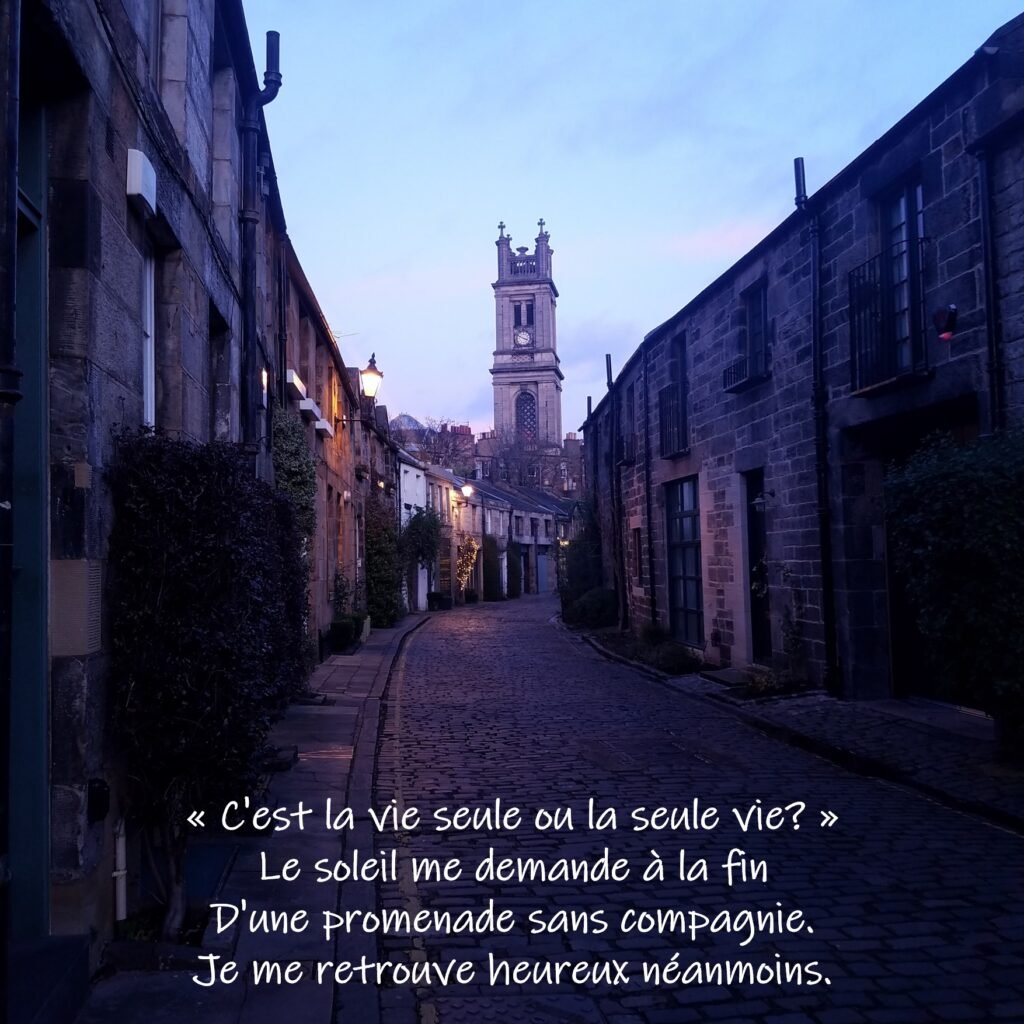
“‘Is it the single life or the only life?’
The sun asks me at the end
Of a walk without company.
I find myself happy nonetheless.”
Derek Leung, Circus Lane, Edinburgh. Dec 17/19
Slàinte Mhath (Cheers to Good Health)
As a Scotland Saltire Scholar, I was invited to take part in a series of cultural events in the country, acting as an ambassador for Scotland. The first was Edinburgh’s Hogmanay: a series of New Year’s events over three days, including a torchlight procession through Old Town, a massive street party on Princes Street, and a New Year’s polar dip at South Queensferry (read more in my blog post here).
During the weekend of Burns Night (celebrating Scotland’s national poet, Rabbie Burns), we ate a lot of haggis and listened to some incredible live music (Mànran at Celtic Connections, as well as revisiting my childhood with KT Tunstall’s “Suddenly I See”). I also tried alcohol for the first time at a Scotch whisky tasting (whoops). Read more about that spectacular trip in this blog post written by my fellow scholar Caitie.

We also got a pass for exploring tourist sites around Scotland, and in September 2020, my flatmates and I went on a week-long trip to Skye and the Highlands. Edinburgh is also home to the world’s largest arts festival, the Fringe Festival, which normally takes place in August. Unfortunately, 2020 was anything but normal.
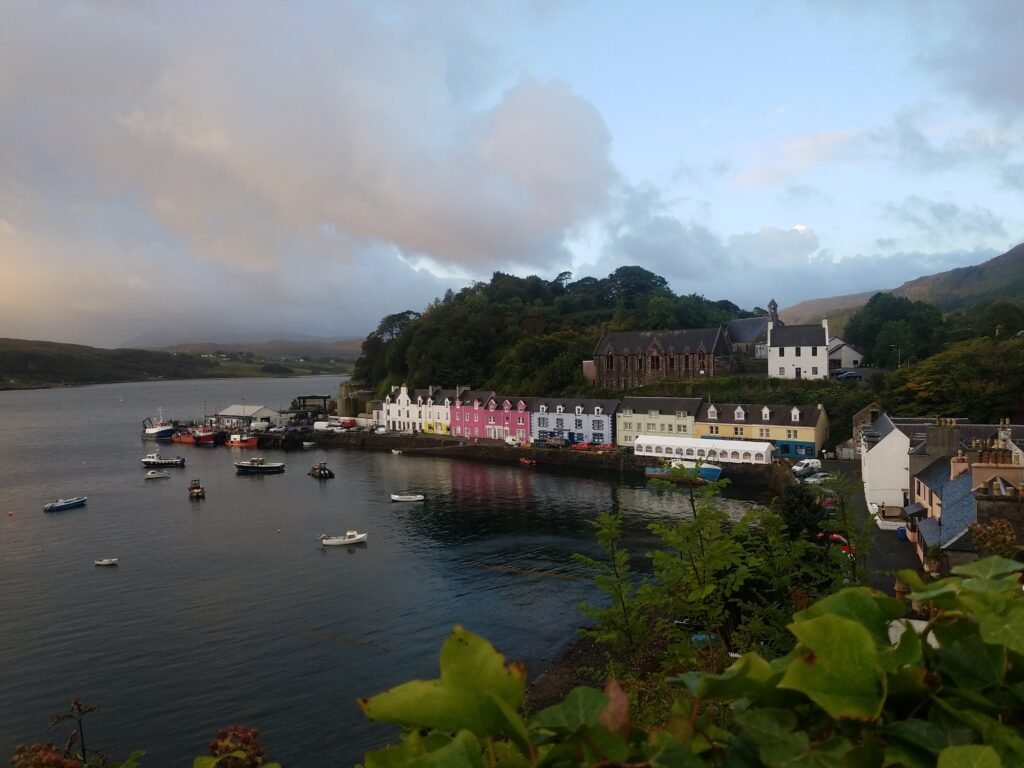
Pandemic!
March 2020 was supposed to be an exciting time: I had finished all the data collection for my MScR project, and the World Men’s Curling Championships were about to be held in Glasgow. I’d liaised with Sport Scotland to do media coverage of the event, but the pandemic creeped up weeks before the championships and led to its cancellation.
Going home at this point meant that I wasn’t going to return to Scotland. So, I decided to stay in Edinburgh for the duration of the pandemic. Living and working in the pandemic was a difficult adjustment. Luckily, my five roommates and I were good company: we sang in Mandarin, made a variety of cocktails, and had potluck dinners.
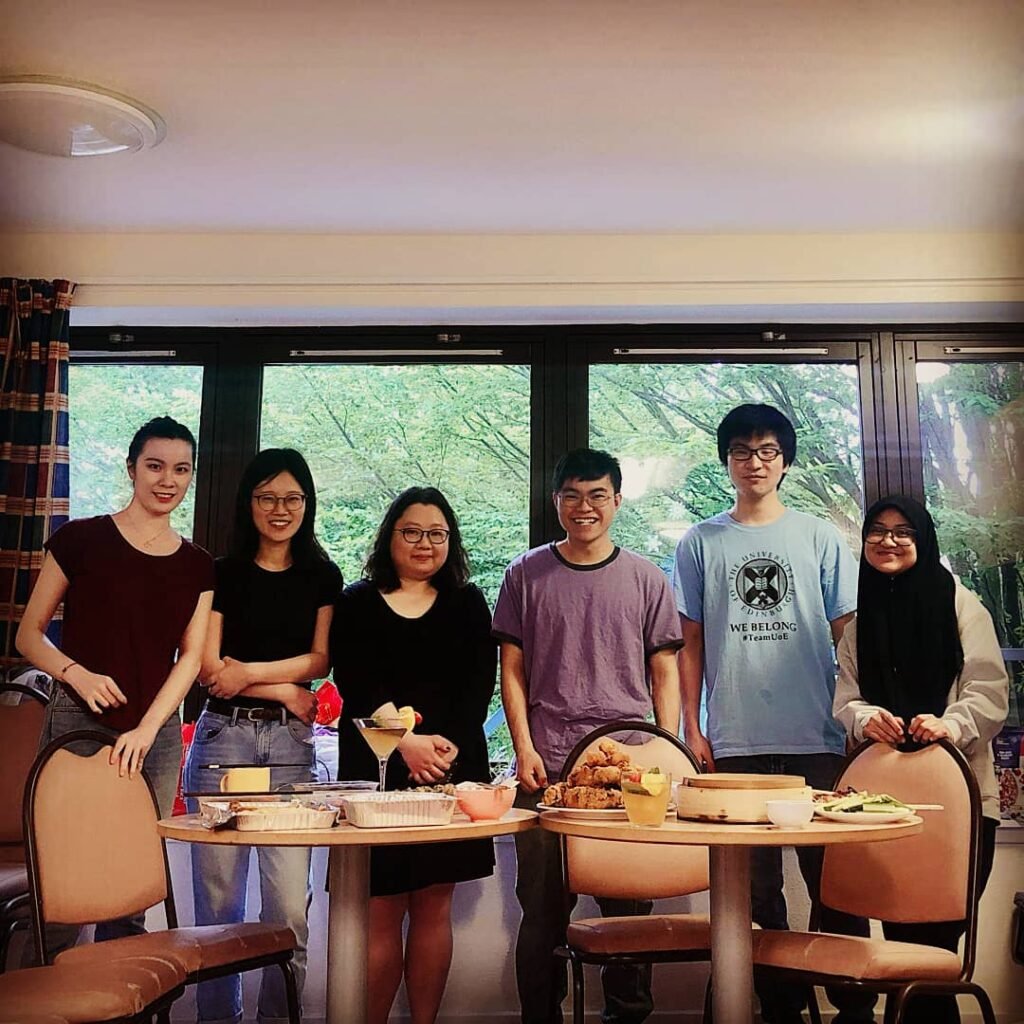
Instead of finishing my MScR thesis, I bought a 3D printer and procrastinated by working on a side project involving 3D-printed crystal structures. I then took a four-month pandemic extension on my MScR. Fortunately, I was hired by the university to digitize geological samples for virtual teaching. I was presented with a golden opportunity: to be paid while learning about 3D scanning and digitization techniques.
A Thesis is But a Chapter
Was it worth it? My parents affirmed this decision by noting that the opportunity to have these experiences is invaluable. Combining my passions into a dream thesis, applying cutting-edge research methods, and experiencing it all where geology and curling originated was truly a poetic touch to a once-in-a-lifetime experience. It is also rewarding that these experiences and research techniques are applicable to my PhD research (which—thank goodness—is completely unrelated to curling stones).
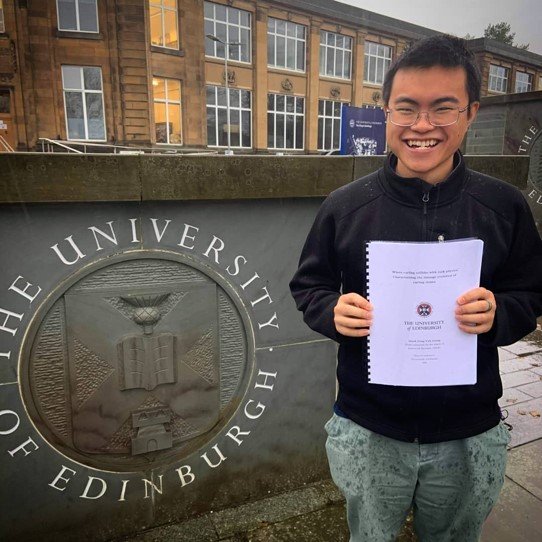
We have come full circle: all good things must come to an end, but the end of a chapter marks the beginning of a new journey. My PhD is that new journey. Green micas (such as fuchsite and mariposite) are commonly associated with gold deposits over geological time, such as those in the Abitibi subprovince (Ontario), Western Cordillera (British Columbia, California, and Alaska), and Appalachians-Caledonides (Newfoundland and Ireland). However, the relationship between the green micas and gold is unclear, and unravelling this relationship is key to determining the exploration potential of these ore deposits. Although this project is drastically different from my ‘dream thesis’, I’m beginning to appreciate the different perspectives and tools that it has given me so far. All told, I’ve learned not to take any rocks—curling stones or otherwise—for granite.

Derek D.V. Leung divides his time between collecting some rocks (mineralogy) and throwing others (curling). Derek was a recipient of the 2018 APGO Education Foundation Scholarship while completing his BSc (Hons) in Earth Sciences at Laurentian University (Sudbury, ON) and investigated the damage evolution of curling stones for his Masters by Research (MScR) at the University of Edinburgh (Edinburgh, UK). He is currently pursuing a PhD at Laurentian University, researching the relationship between green micas (e.g., fuchsite and mariposite) and gold deposits. In his spare time, Derek works on eclectic projects related to 3D printing, pop-up books, and writing.

